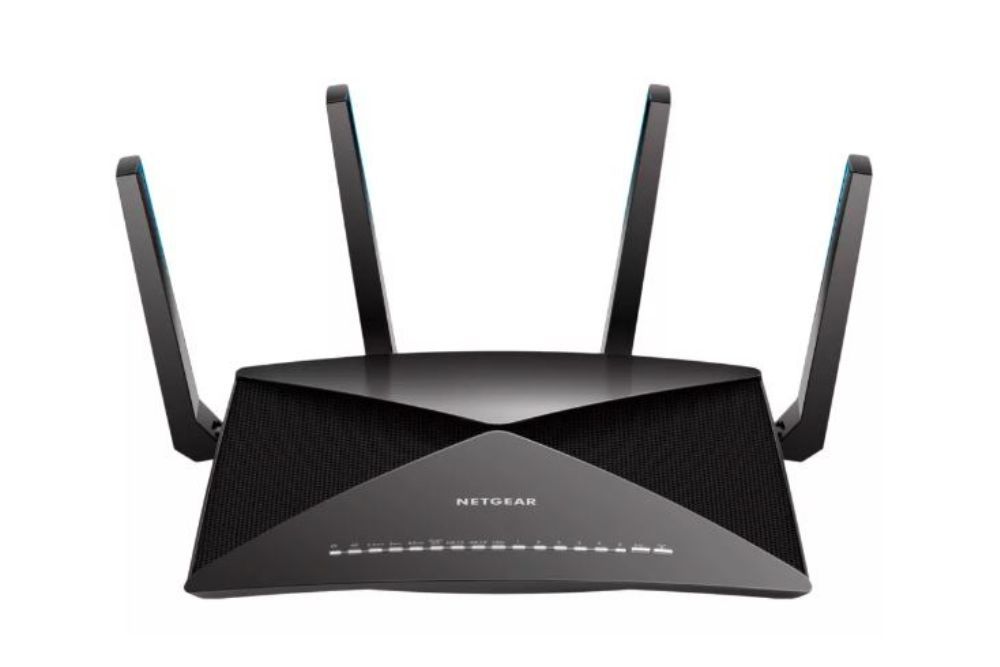
Every month a small business owner stops by RB’s Computer Service looking for a solution to speed up their office Wi-Fi or is concerned about their network’s security. On the same topic, other business owners contact our shop to explore setting up a Wi-Fi network, with similar concerns about speed and security. Without question, a Wi-Fi office network offers business owners several advantages. For example, Wi-Fi routers run on two bands to provide internet access to both computers and essential devices, like smartphones, and tablets. As a result, Wi-Fi enables employees to connect to the network and access resources from anywhere within the office premises, without the need for wired connections. This helps facilitate increased productivity, mobility around the office, and flexibility. The catch is, the average small business owner doesn’t know how to set up, configure, or tweak their Wi-Fi network to run faster and securely. Moreover, on troubleshooting visits to many businesses, we discover the business is using a consumer-grade router vs a commercial-grade router. By way of analogy, imagine running 10 sprinklers from one garden hose. The drain on water pressure from the 10 sprinklers thwarts them from spraying water to any useful distance. Similarly, without the right router, set-up, and configuration, it is no wonder why those offices have Wi-Fi speeds at a trickle. In this blog, I’ll explore 6 advantages of Wi-Fi networks along with ways to overcome speed issues and security concerns. At RB’s Computer Service, we recognize the small businesses we serve are experts in their industries but may not be experts in Wi-Fi networks. If you need help setting up, configuring, or tweaking your Wi-Fi network to run faster and securely, don’t hesitate to contact us today via email at help@rbsmn.com or call us at 763-441-3884. We would be glad to help.
 6 Advantages of Using 2 Bands for Wi-Fi
6 Advantages of Using 2 Bands for Wi-Fi
- Increased Network Capacity
Two-band Wi-Fi utilizes both the 2.4 GHz and 5 GHz frequency bands, allowing for more devices to connect simultaneously without causing significant congestion. This is particularly beneficial in densely populated areas or environments with numerous Wi-Fi devices.
- Faster Data Transfer Speeds
The 5 GHz band offers higher data transfer rates compared to the 2.4 GHz band. By using the 5 GHz band for devices that support it, such as newer smartphones, laptops, and smart TVs, you can achieve faster download and upload speeds, resulting in smoother streaming, quicker file transfers, and improved overall performance.
- Reduced Interference
The 2.4 GHz band is commonly used by various devices like microwaves, cordless phones, and Bluetooth devices. This can lead to interference and degradation of Wi-Fi performance. By having the option to connect devices to the less crowded 5 GHz band, you can reduce interference and experience more stable and reliable connections.
- Wider Coverage
While the 5 GHz band provides faster speeds, it has a shorter range compared to the 2.4 GHz band. By utilizing both bands, you can leverage the wider coverage of the 2.4 GHz band for devices located farther from the router, ensuring a solid Wi-Fi connection throughout your office.
- Flexibility and Compatibility
Two-band Wi-Fi routers or access points offer flexibility in terms of device compatibility. Older devices that only support 2.4 GHz can still connect, while newer devices can take advantage of the higher speeds on the 5 GHz band. This compatibility ensures that all devices can connect to the network, regardless of their Wi-Fi capabilities.
- Seamless Roaming
Some two-band routers support seamless roaming, allowing devices to switch between the 2.4 GHz and 5 GHz bands automatically. This enables uninterrupted connectivity as you move around your office, ensuring a smooth transition between bands without the need for manual intervention.
Overall, using two bands for Wi-Fi provides improved network capacity, faster speeds, reduced interference, wider coverage, compatibility with various devices, and seamless roaming. It enhances the overall Wi-Fi experience and accommodates the diverse requirements of different devices in a modern office environment.
Two Ways to Overcome Wi-Fi Speed Issues
- Upgrade your Wi-Fi Equipment.
- Use a Commercial Grade Router: Ensure that you have a modern and capable router that supports the latest Wi-Fi standards (e.g., 802.11ac or 802.11ax). Upgrading to a more powerful router can improve your network's overall speed and performance.
- Access Points: Depending on the size of your office, consider adding additional access points to extend your Wi-Fi coverage. This helps distribute the network load and reduces congestion, resulting in better speeds. Make sure to position them strategically to minimize interference and maximize coverage.
- Antennas: If your router allows it, consider upgrading the antennas to high-gain or directional antennas. These can help improve signal strength and range, especially in larger office spaces.
2. Optimize Wi-Fi Network Settings:
- Channel selection: Use a Wi-Fi analyzer tool to identify the least congested Wi-Fi channels in your office area. Switch your router to operate on a less crowded channel to minimize interference from neighboring networks.
- Quality of Service (QoS): Configure QoS settings on your router to prioritize important network traffic, such as business-related applications or video conferences. This ensures that critical tasks receive higher bandwidth allocation, improving overall performance.
- Security settings: Implement strong security measures on your Wi-Fi network to prevent unauthorized access, which can slow down your network speed. Use WPA2 or WPA3 encryption with a strong password to secure your Wi-Fi.
Remember to regularly update your router's firmware and perform routine maintenance to ensure optimal performance. Additionally, educating your office staff about best practices, such as avoiding bandwidth-heavy activities during peak hours, can also help maintain faster Wi-Fi speeds.
2 Ways To Increase Wi-Fi Security
- Enable WPA2/WPA3 Encryption
 One of the most critical steps is to ensure that your Wi-Fi network is encrypted. Encryption helps protect your data from being intercepted and accessed by unauthorized users. Use either WPA2 (Wi-Fi Protected Access II) or the newer WPA3 standard for encryption. WPA3 provides stronger security and is recommended if your devices support it. To enable encryption, access your router's settings and select the appropriate encryption option. Create a strong, unique passphrase to secure your network.
One of the most critical steps is to ensure that your Wi-Fi network is encrypted. Encryption helps protect your data from being intercepted and accessed by unauthorized users. Use either WPA2 (Wi-Fi Protected Access II) or the newer WPA3 standard for encryption. WPA3 provides stronger security and is recommended if your devices support it. To enable encryption, access your router's settings and select the appropriate encryption option. Create a strong, unique passphrase to secure your network.
- Change Default Router Settings
Most routers come with default usernames, passwords, and network names (SSIDs) that are widely known and can make your network vulnerable. It's important to change these default settings to unique values. Here's what you should do:
- Change the default administrator username and password for your router. Use a strong, complex password containing a mix of letters, numbers, and special characters.
- Change the default network name (SSID) to something unique. Avoid using personal information or easily guessable names.
- Disable remote management, if possible, to prevent unauthorized access to your router's settings from the internet.
- Regularly update your router's firmware to ensure you have the latest security patches and bug fixes.
Bottom Line
Wireless Wi-Fi is not inherently slower and nor is it weaker on security, the catch is many small business owners are not using a commercial-grade Wi-Fi router and if they are using one, they don’t know how to set it up, configure it, and tweak it to run faster and more secure. As I pointed out above, Wi-Fi has many advantages for small business owners, and speed issues and security concerns can be overcome. In addition to helping facilitate increased productivity, mobility around the office, and flexibility, a Wi-Fi network is cost-effective. Wi-Fi eliminates the need for extensive cabling infrastructure, reducing installation and maintenance costs. It also provides scalability, allowing easy addition or relocation of network devices without the need for rewiring. Having said that, RB’s Computer Service recognizes that small business owners are experts in their industries but may not be experts in Wi-Fi networks. If you need help setting up, configuring, or tweaking your Wi-Fi network to run faster and securely, don’t hesitate to contact us today via email at help@rbsmn.com or call us at 763-441-3884. We would be glad to help. In addition to Wi-Fi office solutions, RB’s Computer Service provides affordable Managed IT Service Agreements, and ransomware strategies and sells the best commercial-grade firewall routers, best laptop computers, best desktop computers, business computers, computer parts, and computer monitors. We also provide computer repair, iPhone and smartphone repair, and tablet repairs to customers and clients throughout central Minnesota and St. Cloud.
References
BusinessTech Weekly, Yulia Volyntseva, Advantages and disadvantages of wireless networks, June 21st, 2021, https://www.businesstechweekly.com/operational-efficiency/wireless-networks/advantages-and-disadvantages-wireless-networks.
AdvantagesList, MRARSLAN, WiFi Advantages And Disadvantages For Home, Office, And Students, October 31st, 2022 https://advantageslist.com/wifi-advantages-and-disadvantages-for-home-office-and-students/
APlusTopper, Prasanna, Wireless Network Advantages and Disadvantages | Advantages and Disadvantages of Wireless Network Communication, March 23rd, 2023, https://www.aplustopper.com/wireless-network-advantages-and-disadvantages/
ConnectUs, Editor in Chief, 6 Advantages and Disadvantages of Dual Band Router, September 30th, 2016, https://connectusfund.org/6-advantages-and-disadvantages-of-dual-band-router
Insider, Dave Johnson, 9 ways to boost your Wi-Fi signal for faster internet speeds, March 10th, 2022, https://www.businessinsider.com/guides/tech/how-to-boost-wifi-signal
Vector Security Network, Staff, 10 Ways to Improve Your Business Wi-Fi Security, March 15th, 2023, https://vectorsecuritynetworks.com/7-ways-to-secure-your-business-wi-fi-network/

